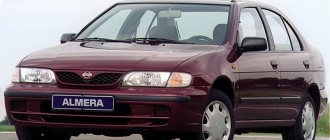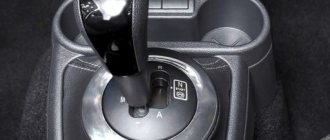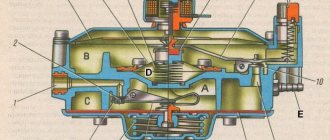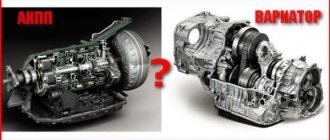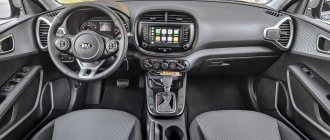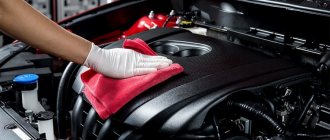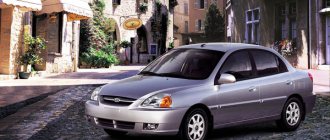6-cylinder engines are quite common. At the same time, most manufacturers use a V-shaped arrangement for them due, first of all, to their very compact dimensions. In-line engines are now rare due to the front-wheel drive design and denser layout of the vast majority of modern cars. BMW currently uses such engines most widely (some N and B). In the past they were quite common.
RB engines are discussed below.
General Features
These motors are based on the L20. This series combines gasoline 6-cylinder in-line engines. They were produced from 1985 to 2004. There were SOCH and DOCH versions. The former have one camshaft and two valves per cylinder, the latter have two camshafts and a 24-valve cylinder head, and each cam drives one valve. RB engines have a cast iron cylinder block and a timing belt drive. The series includes turbocharged engines, most of which are equipped with an intercooler and a bypass (excess pressure relief valve), except for those installed on Cefiro and Laurel. All RBs were manufactured in Yokohama. Based on them, a series of diesel engines RD was created.
RB20
This is a 2-liter engine with a cylinder diameter of 78 mm and a piston stroke of 69.7 mm. It is presented in several modifications:
- RB20E. It has one camshaft (phase – 232/240°, lift – 7.3/7.8 mm). Its performance is 129-148 hp. With. power at 5600 rpm and 167-181 Nm of torque at 4400 rpm.
- RB20ET. Turbocharged version with 168 hp. With. and torque of 206 Nm at 6000 and 3200 rpm, respectively.
- RB20DE. It has two camshafts (phase – 232/240°, lift – 7.3/7.8 mm). Power is 148-153 hp. s., torque – 181-186 Nm at 6400 and 5600 rpm. The compression ratio is 10.
- RB20DET. This is a turbocharged version of the RB20DE (phase – 240/240°, lift – 7.3/7.8 (248/240°, 7.8/7.8 mm on Red Top)). Develops 212 hp. With. at 6400 rpm and 264 Nm at 3200 rpm.
- RB20DET-R. Develops 210 hp. With. at 6400 rpm and 245 Nm at 4800 rpm. It was installed on the HR31 Skyline 2000GTS-R, produced in the amount of 800 units.
- RB20DE NEO. Refers to DOCH. It features improved environmental performance, which is achieved due to a modified combustion chamber and timing belt, an additional crankshaft sensor and another ECU. Power is 153 hp. With.
- RB20P. 12-valve SOCH engine running on liquefied gas. Its power is 93 hp. With. at 5600 rpm, torque – 142 Nm at 2400 rpm.
Early DOCH engines (since 1984) are equipped with a NICS injection system.
For the second series from 1989-1993, known as the Silver Top, NICS was replaced by ECCS. Also on the new engines, the design of the cylinder head was improved: 12 small intake ports were replaced with 6 large ones, but there were 12 holes left on the cylinder head, so a separating plate was used.
The first RB 20 E engines were installed on the C32 Laurel in 1984. The manufacturer also equipped the Skyline R31 with this engine. Versions ET, DE, DET were used on the HR31 Skyline, C32 Laurel and Z31 Fairlady 200ZR since 1985. Silver Top was installed on the R32 Skyline, A31 Cefiro, C32, C33 Laurel.
This engine is considered very reliable. Only after 100 thousand kilometers do the coils fail (except for the RB20E). Among the disadvantages, high fuel consumption (11-16 liters in the city) with low performance is noted.
Unit reliability
The RB20DET motor is incredibly reliable, which has been repeatedly tested in practice. Durability and resistance to loads are characteristic of the entire RB series. Regular maintenance guarantees long mileage without breakdowns. In any case, it is allowed to use only high-quality gasoline and proven motor oil.
RB20DET often stalls or does not start. The cause of the breakdown is a malfunction of the ignition coils. It is recommended to change coils every 100 thousand kilometers, which is not done by all car enthusiasts. Another drawback is gas mileage. In mixed mode it reaches 11 liters per 100 km.
RB24S
This carburetor engine was installed only on the export A31 Cefiro (Altima). It was assembled by combining an RB25DE/DET cylinder block, an RB30E cylinder head with a single camshaft, and an RB20DE/DET crankshaft with 34mm pistons. The 2.4-liter engine has a cylinder diameter of 86 mm and a piston stroke of 69.7 mm. It is capable of spinning higher than the RB25DE/DET with the same displacement because it has the same stroke as the RB20DE/DET. Productivity is 141 liters. With. at 5000 rpm and 197 Nm at 3000 rpm. Often this engine is equipped with a cylinder head with two camshafts from other engines in the series while maintaining the carburetor settings.
It is almost never found at the local car market.
Cars on which internal combustion engines were installed
| Make, body | Generation | Years of production | Engine | Power, hp | Volume, l |
| Nissan Cefiro, sedan | First | 1992-94 | RB20DET | 205 | 2 |
| 1990-92 | RB20DET | 205 | 2 | ||
| 1988-90 | RB20DET | 205 | 2 | ||
| Nissan Fairlady Z, coupe | Third | 1986-89 | RB20DET | 180 | 2 |
| 1983-86 | RB20DET | 180 | 2 | ||
| Nissan Laurel, sedan | Sixth | 1991-92 | RB20DET | 205 | 2 |
| 1988-90 | RB20DET | 205 | 2 | ||
| Nissan Skyline, sedan/coupe | Eighth | 1991-93 | RB20DET | 215 | 2 |
| 1989-91 | RB20DET | 215 | 2 | ||
| Nissan Skyline, coupe | Seventh | 1986-89 | RB20DET | 180 190 | 2 |
| Nissan Skyline, sedan | Seventh | 1985-89 | RB20DET | 190 210 | 2 |
RB25
This DOCH motor is available in four versions:
- RB25DE. Develops 180-200 hp. With. and 255 Nm at 6000 and 4000 rpm, respectively. Camshaft phase – 240/232°, lift – 7.8/7.3 mm on R32 and 240/240° and 7.8/7.8 mm on R33.
- RB25DET. Equipped with a T3 turbine. Its productivity is 245-250 liters. With. and 319 Nm. Camshaft phase – 240/240°, lift – 7.8/7.8 mm.
- RB25DE NEO. Develops 200 hp. With. at 6000 rpm and 255 Nm at 4000 rpm. Camshaft phase – 236/232°, lift – 8.4/6.9 mm.
- RB25DET NEO. Power is 280 hp. s., torque – 362 Nm at 6400 rpm and 3200 rpm, respectively. The camshaft phase is the same, lift is 8.4/8.7 mm.
These engines were first installed on the R32 Skyline GTS-25.
Since 1993, RB 25 engines have been equipped with NVCS, which improves low-end performance.
In 1995, the electronics were redesigned. The main change was the installation of ignition coils with built-in igniters. In addition, the mass air flow sensor, ECU, camshaft and throttle position sensors were replaced. However, series 1 and 2 are mechanically very similar. The only difference is that the camshaft position sensor shaft enters the exhaust chamber differently. Early engines of the second series had a traditional Mitsubishi camshaft position sensor, which was later replaced with a Black part due to a broken positioning tooth. The RB25DET of the second series received a ceramic turbine compressor wheel instead of an aluminum one.
In 1998, RB engines with NEO cylinder heads appeared, providing better environmental performance. It featured valve lifters instead of hydraulic lifters, different camshafts with a Variable VCT solenoid, a higher temperature thermostat (82°C), specific coil kits and a modified intake manifold. Thus, the RB25 NEO received two entrances to the intake manifold, and the diameter of the channel was reduced from 50 to 45 mm to increase air speed and reduce torque. Since the cylinder head combustion chamber is smaller, GT-R spec connecting rods and special pistons were used to compensate. The RB25DET NEO gets a larger OP6 turbo with steel compressor and turbine wheels instead of nylon-plastic and ceramic respectively. Some of them have an N1 type oil pump and its drive shaft is modified from the crankshaft to avoid breakdowns at high speeds. Thus, NEO engines are significantly different from conventional RB25s.
RB25DE without VCT was used for the R32 Skyline. RB25DE and RB25DET with VCT were installed on the R33 and WNC34 Stagea. The first R34s had regular RB25s, while the later Skylines and WGNC34s had NEO engines.
RB25 is close in fuel consumption to RB20, but provides better dynamics, which is why many people prefer it. The engines are also similar in reliability.
Malfunctions and repairs
The RB20 engine is quite reliable, but it also has a number of problems that cannot be avoided.
Let's consider the main malfunctions that arise during engine operation: Repair of the RB20 cylinder head.
- Loss of power, unstable idle. This means it's time to replace the timing belt, which has become stretched.
- The revolutions are floating. This means that the throttle valve is clogged and needs to be cleaned.
- Motor oil burn. It is worth checking for leaks and installing oil rings.
- The whine of the alternator belt, which needs to be replaced.
- As you can see, the motor does not have any global problems, and therefore can be considered a reliable power unit.
RB26DETT
This 2.6-liter engine was developed for the BNR32 instead of the originally planned RB24DETT due to the increased weight after the installation of all-wheel drive. It was used on all Skyline GTRs from 1989 to 2002. It has a DOCH aluminum cylinder head. Camshaft phase – 240/236°, lift – 8.58/8.28 mm. It differs in its special intake design from other RB engines with six throttle valves instead of one (3 sets of 2 combined valves). The RB26DETT is equipped with a parallel twin-turbo charging system based on two T25 ceramic turbochargers. Wastegates are used to limit the pressure to 0.69 bar, although the GT-Rs have a built-in limiter set to 0.97 bar.
The following are some design features of the RB26DETT: 6-throttle intake, valve actuation by pushrods, gaskets under the cups, timing belt drive, crankshaft position sensor displaces the exhaust cam and reports the position of the crankshaft and camshaft to the ECU, water-cooled and oil-lubricated turbines, OEM cast pistons have Additional oil cooling channels under the crowns, oil injectors, sodium-filled exhaust valves, 8-counterweight crankshaft, I-shaped connecting rods.
The performance of early engines, according to factory data, is approximately 276 hp. With. power at 6800 rpm and 353 Nm of torque at 4400 rpm. On the latest RB26DETT, torque increased to 392 Nm, but power remained at the same level. This power value is explained by the “gentleman’s agreement” of Japanese automakers (Jishu-kisei) 1989-2004, according to which the announced value of this indicator should not exceed 276 hp. With.
BNR32 engines before 1992 are characterized by the problem of oil starvation caused by the small interaction surface of the crankshaft and the oil pump. This leads to breakdown of the latter at high speeds. On later RB26DETTs this deficiency was eliminated by installing a wider oil pump drive. In addition, extensions for its drive are offered on the aftermarket. Later, another solution was found by Supertec Racing. Instead of the OEM flat drive system, racks were used to drive the fuel pump gears like on the Toyota 1JZ-GTE. This kit is available for most RB26 performance oil pumps, including OEM, N1, Nismo parts.
On the BNR34 motor, the ECU was retuned, some minor cosmetic updates were made, and a T28 ball bearing was used instead of rolling bearing turbines. At the same time, the turbine wheel remained ceramic (the R32 Nismo, R32 - R34 N1, R34 V-Spec II Nur engines had steel parts). The latest Skyline GT-R differs from the BNR32 and BCNR33 RB26 engines in the following features: a red cylinder head cover, a different emblem on the coil cover, a plastic timing gear cover, an unpainted intake chamber (probably a lighter casting), a Hitachi crankshaft position sensor with a different drive, built-in in coils with igniters instead of a set of igniters on the back side of the coil cover, stainless steel downpipes, different diameters of coolant and heater pipes on the intake side of the cylinder block, dual-mass flywheel.
In addition to the Skyline GT-R, the RB26DETT was used on the ENR33 Autech GTS-4, the WGNC34 Stagea 260RS on the RS4 chassis and the Tommykaira ZZII concept.
The RB26DETT has become one of the most well-known engines for its performance and tuning potential, as well as being the engine of the Skyline GT-R. It is also quite reliable. The only problems include the above-mentioned oil starvation on early engines and the failure of coils, characteristic of the RB series, approximately once every 100 thousand km.
Tuning
The RB25DET engine is reliable and allows you to significantly increase power without losing the reliability of the power unit.
- The simplest and most effective tuning option is to replace the standard turbine with a sports version that produces a pressure of 0.9 bar. At the same time as the new turbine, the intercooler is installed, the pump and oil pump are replaced, and a new engine control unit is installed. All this allows you to increase engine power to 300-310 horsepower. RB engines can easily withstand such serious tuning and have a service life of 100-200 thousand kilometers.
- Installing a GT3540 turbine, which produces a pressure of 1.5 bar, allows you to get a power of 500 horsepower. In this case, it is necessary to replace the connecting rods, pistons, crankshaft and the entire engine power system. Such tuning is more typical for sports cars, where engine reliability issues fade into the background.
- A fairly simple and relatively inexpensive tuning option would be to use lightweight flywheels and replace the standard engine power supply system. This allows you to get about 15-20 additional horsepower. We can also recommend you chip tuning, which involves installing a new engine control unit. This ensures a power increase of 30-40 horsepower.
RB30
This engine was produced from 1985 to 1991 in three versions:
- RB30S. Single camshaft carburetor engine. Develops 136 hp. With. at 4800 rpm and 224 Nm at 3000 rpm. Fitted to GQ Patrol and some Middle Eastern R31 Skylines.
- RB30E. SOCH system engine. Its power is 157 (153) hp. s., torque - 252 (247) Nm at 5200 and 3600 rpm, respectively. Used on the R31 Skyline (on South African cars it develops 171 hp at 5000 rpm and 260 Nm at 3500 rpm) and VL Holden Commodore, respectively.
- RB30ET. Turbocharged version of the RB30E. Develops 201 hp. With. at 5600 rpm and 296 Nm at 3200 Nm. It was also installed on the VL Commodore.
This engine was developed for Skyline and Patrol. Holden acquired the rights to it in order to use it as a replacement for the 3.3-liter 202 engine for the Commodore, which did not meet stricter environmental requirements because it consumed unleaded gasoline. Moreover, Holden installed the radiator lower than on the Skyline, as a result of which overheating often occurred, leading to deformation, which was caused by air pockets in the cylinder head. Otherwise the motor is very reliable.
The turbocharged version with Garrett T3 features a cylinder block with lower compression, a more powerful oil pump, 250 cc injectors and a different intake manifold.
The RB 30 engine is still popular in Australia and New Zealand today in racing and drag, and is also used for swapping. It is almost never found at the local car market.
Nissan RB20DE engine tuning
RB20DET Boost up
Please note, that N/A tuning of RB20DE and RB20E would be just wasting of time and money, since RB20DET with cheaper mods will be faster. Also you should not try installing turbo kit on RB20DE or RB20E, it is overpriced. The easiest way is to buy RB20DET. And as to RB20DET, it is the most interesting engine with great potential. How to upgrade RB20DET? Stock turbocharger will be the first problem on your way, it is not the best option for tuning. The maximum safe boost pressure is 11.5 psi (0.8 bar) (sometimes it may be 13 psi (0.9 bar), but unadvisable). On such boost you will gain 260-270 horsepower. To implement it, you should buy RB26DETT fuel injectors, 444 cc/min, and also Skyline GTR intercooler, wastegate, downpipe, 3” straight pipe exhaust system, RB25 MAF or 300ZX Z32 MAF, boost controller, Walbro 255 or GTR fuel pump and also spark plugs. Then you need to adjust all this. On such configuration you will drive quarter mile in mid 13 seconds. To gain 300-320 horsepower, you need 45V4 turbocharger (RB25DET turbo). And also buy Apexi power FC and cold air intake. You may also use HKS GT2530 turbocharger. At 21 psi (1.4-1.5 bar) it may reach about 350 horsepower. These are the safest configurations, which are also quite fast and reliable. How to get 350-400 horsepower? You should just change stock turbocharger for HKS GT2535 or HKS GT2540 and buy camshafts 256/256. To gain 400-450 HP, you need TD06 20G turbocharger, camshafts 264/264, Splitfire ignition coils, Bosch 044 fuel pump, fuel injectors 550 cc or 570 cc (Nissan GTR R35), MLS head gasket and ARP head studs. Having set 17 psi (1.2 bar) pressure, you will obtain 400 HP, and if you increase the boost to 25 psi (1.7-1.8 bar), about 450-470 HP will be gained. With the power like this it will take you low 12 seconds per ¼ mile. In general, for stock internals it is safer and more reliable not to exceed 400 HP. It is possible to reach 500 horsepower also, but it would be too expensive and irrational. Better buy RB25DET or RB26DETT engine.
RB20DET Stroker
For your turbocharger to boost still faster, you may enlarge displacement to 2.33L. 1. Upon enlarging cylinder diameter to 81 mm and purchasing Toyota 4A-GZE pistons, you will gain 2.15L. 2. Having enlarged cylinder diameter to 82 mm and buying Tomei pistons, you will get 2.2L. 3. Keeping stock pistons, but having installed RB25DET crankshaft and connecting rods, your displacement will rise to 2.05L. 4. If you enlarge cylinder diameter to 81 mm (Toyota 4A-GZE pistons), and also install RB25DET crankshaft and connecting rods, displacement will be 2.2L. 5. Having purchased RB26DETT crankshaft and connecting rods, keeping old stock pistons along with this, you will have 2.1L engine displacement. 6. RB26DETT crankshaft and connecting rods + 4A-GZE pistons will give you 2.3L displacement. 7. If you enlarge cylinder diameter to 82 mm (Tomei pistons) and also purchase RB26DETT crankshaft and connecting rods, displacement will rise to 2.33L.
Special versions
REINIK based on the R33 RB25DET made more than 20 RB 28 DET engines for a special version of the R33 GT25t called 280 Type-MR. This engine was tuned for high torque and developed 300 hp. With. and 354 Nm.
N1 is a modified NISMO version of the RB26DETT. The modification was aimed at reducing engine maintenance when used in racing. To achieve this, the crankshaft was better balanced taking into account vibrations at 7000-8000 rpm. In addition, the water and oil supply channels in the cylinder block have been improved. The pistons and upper piston rings were increased to 1.2 mm. Finally, the camshafts and turbos were modified.
The N1 features Garrett turbos with steel turbine wheels instead of ceramic ones. This is due to the unreliability of the latter at high rotation speeds, causing large centrifugal forces (for example, at increased boost pressure). At the same time, the BNR32 and BCNR33 engines have T25 turbines, and the BNR34 engine has GT25. Theoretically, the N1 with increased boost pressure and a modified fuel system is capable of withstanding 800 hp. With. with standard cylinder block and ShPG.
The cylinder diameter is 86 mm. It can be bored by 1-2 mm. Block N1 is marked 24U (standard block RB26DETT – 05U). It is compatible with all variants of this engine.
The RB28DETT is based on the RB26DETT for the NISMO Skyline GT-R Z-Tune. It has a more powerful RB26 GT500 block modified by Nich. Productivity is 510 l. With. and 540 Nm.
Also based on the RB26DETT REINIK (GT500 and Z-tune designed there), the RB-X GT2 was created for the R33 NISMO 400R. It is distinguished by bored cylinders and an increased piston stroke, as a result of which the volume has increased to almost 2.8 liters. In addition, this engine has a reinforced cylinder block and cylinder head, a metal cylinder head gasket, forged connecting rods and crankshaft, pistons with cooling channels, N1 turbines with reinforced actuators, a high-performance air filter, stainless steel downpipes, and a low-resistance sports catalyst. It develops 443 hp. With. at 6800 rpm and 469 Nm at 4400 rpm. RB-X GT2 was used in Pikes Peak, 24h Le Mans.
Nissan Special Vehicles Division Australia produced two limited edition versions of the R31 with the RB30E featuring longer cam opening and a better flow exhaust system. Installed on the GTS1, this engine develops 174 hp. With. at 5500 rpm and 255 Nm at 3500 rpm. The GTS2 engine, in addition, has a special cam profile, a different exhaust, a ported cylinder head, an additional computer, so it is slightly more powerful: 188 hp. With. and 270 Nm at 5600 and 4400 rpm, respectively.
For the Tommy Kaira M30, a special RB30DE engine was built based on the R31 GTS-R. It is a combination of the RB30E block and a modified RB20DE cylinder head. Its performance is 236 hp. With. and 294 Nm at 7000 and 4800 rpm, respectively.
The RB30DET engines appeared in a similar way. They are represented by combinations of a short block RB30E, a dual-camshaft cylinder head from some other Nissan RB engine and a turbine. So, there are options RB25/30 (bottom RB30E with top RB25DE/DET) and RB26/30 (with top RB26DETT). Cylinder heads from RB20DE/DET are not used due to different bore diameters (86 mm on RB30 and 78 mm on RB20). The Tommy Kaira had to use this upper in a modified form because the RB25 was not yet released.
It must be taken into account that when using an RB25 cylinder head with VCT (R33, C34, WNC34), you will have to change the external oil supply and shift the oil galleries. Therefore, it is easier to use the top from the R32, C33, A31 engines. VCT can also be disabled. Sometimes it is necessary to reduce the oil restrictors in the block and modify the oil pump to prevent it from destroying at high speeds.
Combining a twin-cam cylinder head with a stock RB30E bottom end results in a compression ratio of about 8.2:1, suitable for lightly modified street engines. This has therefore become a popular alternative in Australia and New Zealand to converting an RB30E into an RB30ET using the latter's original attachments.
Despite the larger volume, these hybrids are inferior in power to the RB26DETT, since they do not have an internal unit mount, as a result of which they are not able to spin as high due to vibrations around 7500 rpm. To compensate, the RB30DETs offer more torque at low revs due to the longer piston stroke. However, with advanced balancing and development, they are capable of reaching 11,000 rpm.
Service
Nissan vq35hr
The power unit is serviced every 15,000 km. Experienced motorists recommend reducing the service interval to 10,000 km. This will preserve the properties of the engine longer and extend its service life.
Maintenance is carried out according to the following scheme:
Maintenance of the RB20 motor.
TO-1: Oil change, oil filter replacement. Carry out after the first 1000-1500 km. This stage is also called the break-in stage, since the engine elements are grinding in.
TO-2: The second maintenance is carried out after 10,000 km. So, the engine oil and filter are changed again, as well as the air filter element. At this stage, the pressure on the engine is also measured and the valves are adjusted.
TO-3: At this stage, which is performed after 20,000 km, the standard procedure for changing the oil, replacing the fuel filter, as well as diagnosing all engine systems is carried out.
TO-4: The fourth maintenance is perhaps the simplest. After 30,000 km, only the oil and oil filter element are changed.
TO-5: The fifth maintenance is like a second wind for the engine. This time the timing belt and rollers, oil and filter, fuel system filter elements and air filter are changed. Injectors and spark plugs are also checked.
Particular attention should be paid to computer diagnostics. There are no hydraulic compensators
Stroker whales
There are many stroker kits for Nissan RB engines: 2.2, 2.4 for RB20, 2.6, 2.7, 2.8 for RB25, 2.7, 2.8, 2.9, 3, 3.15, 3.2, 3.3, 3.4 for RB26, 3.2, 3.3, 3.4 for RB30. Some of them are presented as tuning kits, others are obtained by using parts from other engines (for example, equipping the RB25DET with pistons, connecting rods, crankshaft from the GT-R will increase its volume to 2.6 liters with the same cylinder diameter as the RB26DETT). It should be noted that motors modified using stroker kits are designated with indices similar to the factory ones.
Nissan RB25DE engine tuning
RB25DET Boost up
You should immediately forget of naturally aspirated tuning RB25DE or installing turbo kit on RB25DE. It is expensive, takes long time and has no sense. You will just waste your money. It is much easier, more reliable, quicker and cheaper to purchase RB25DET, and you will gain much power at once. As to increasing the boost on stock RB25DET turbocharger, their limit is just 11.5-13 psi (0.8-0.9 bar). To make your car driving at 13 psi (0.9 bar), you need to buy 3 inch performance exhaust system, GTR front intercooler, Apexi power intake, Z32 MAF, boost controller, new spark plugs and new water pump. And also purchase GTR N1 oil pump, oil cooler, Walbro 255 lph fuel pump, Apexi Power FC (or other aftermarket ECU). With these performance parts you will gain about 300 WHP. It will let you drive 1/4 miles for mid 13 seconds. Certainly, 300HP is not what you expect from the legendary engine, so we go on. Wishing to gain 350+ WHP, we should upgrade the previous variant. Your stock turbocharger will not promote much power, therefore you need HKS GT2835 turbocharger. Also buy fuel injectors 550 cc/min, fuel pressure regulator, Splitfire ignition coils and 3-layer radiator. Thanks to these upgrades, it will be enough to set boost pressure at 15 psi (1 bar) to gain 340 WHP. And if the boost is increased to 22 psi (1.5 bar), you will get about 400 horsepower on the wheels. Still not enough? In this case you need GT3540 turbocharger, and also camshafts 256/256, valve springs and fuel injectors 750 cc/min. With these mods you will obtain 400 WHP at 15 psi (1 bar). Turbocharger like this lets driving quarter mile per high 11 seconds. The main is, that you can do all this using stock pistons. Moreover, RB25DET stock internals will bear even 500 horsepower, and if you use water methanol injection kit, then even more than 500 HP. But to be sure in the reliability of your engine, it is worth buying GTR rods, forged pistons, MLS head gasket, ARP studs and make head porting. Upon this more than 500-600 horsepower will be available. However, if the power is too high, cracks may appear on RB25DET cylinder block. Besides the described above, sometimes RB26DETT head is installed on RB25DET. Also stroker kit may be used, then displacement will reach 2.8-2.9L. Some owners apply RB26DETT crank, RB26DETT pistons and 1.2 mm head gasket. It will make compression ratio 8.7 and increase displacement to 2.6L. Using 1.5 mm head gasket will reduce compression ratio to 8.4. For everything to work properly, you should close the port to NVCS system. All these performance mods are too expensive, complicated and irrational. If you wish really impressive power, then better buy RB26DETT engine.
